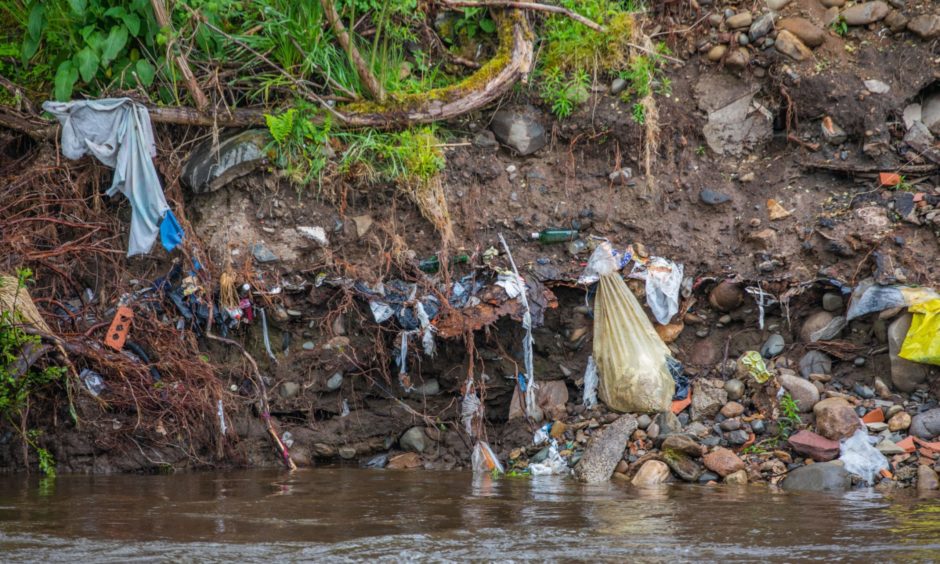An investigation has been launched to find the source of pollution that is “suffocating” fish in a Perthshire river.
A river user said the impact on local salmon fishing could be costing the local economy “thousands”.
Large quantities of brown silt have been appearing in the water, with locals blaming the nearby waste water treatment works.
Scottish Environment Protection Agency (Sepa), however, say the source of the pollution is unknown.
When the river became brown and cloudy on Tuesday last week, a salmon could be seen floundering down stream.
Salmon ‘in distress’
Local river convener Robert Kellie said the fish was showing signs of “distress”.
He said the silt would be preventing its gills from working, effectively “suffocating” it.
“That’s a fish in distress,” he said.
“It has dropped down the river. It should be going up stream but the amount of sediment in the water is making it struggle to breathe.”
The incident on Tuesday followed a thunderstorm.
Mr Kellie says the water discolouration happens when there is heavy rainfall.
Salmon, which migrate between freshwater rivers and the sea, are found in the River Tay all year round.
They swim upstream to spawn, and the Ericht, which flows into the rivers Isla and eventually the Tay, is an important habitat for the fish.
Threat from landfill
But the ecology of the Ericht is under pressure from the impact of human activity.
In addition to the silt pollution feared to be killing fish, the water is being continually contaminated by household and industrial waste.
The source is a historic landfill at the river bank. Waste is exposed as the bank is eroded.
It is believed the landfill site dates from between around 1940 and 1970.
The problem persists despite a recent £80,000 project to remove and contain the waste.
Mr Kellie is among those calling for action to be taken to protect the wildlife living along the river.
Cost to tourism
The Tay and its tributaries are a magnet for tourists looking to experience some of the best fishing Scotland has to offer.
West Grange fishing manager Andrew Lees said the loss of one salmon could cost the local economy “thousands”.
And he said the pollution in the river was not only killing fish, but was putting people off fishing there.
“I wouldn’t want to bring guests up here to fish with this in front of them.”
Andrew Lees, fishing manager.
“Purely from an economic point of view, fishermen travel from all over the world to try to catch a Scottish salmon,” said Mr Lees.
“That salmon is worth thousands to the Scottish economy in terms of hotel stays etc.”
Looking across at the rubbish strewn river bank and silted water, he said: “I wouldn’t want to bring guests up here to fish with this in front of them.
“It brings down the value of the fishing in the river – and the revenue.”
He added: “Wild salmon numbers are struggling anyway and this is not helping.”
A Scottish Water spokesperson said: “Scottish Water attended following a report from Sepa on Tuesday of discolouration in part of the River Ericht.
“Checks confirmed that the nearby Blairgowrie waste water treatment works was, and is, operating normally and is not the cause of the discolouration.
“Scottish Water is liaising with Sepa as part of investigations to establish whether the source of the silt-like material in the river is a third party and is entering the sewer network upstream of the waste water treatment works.”
